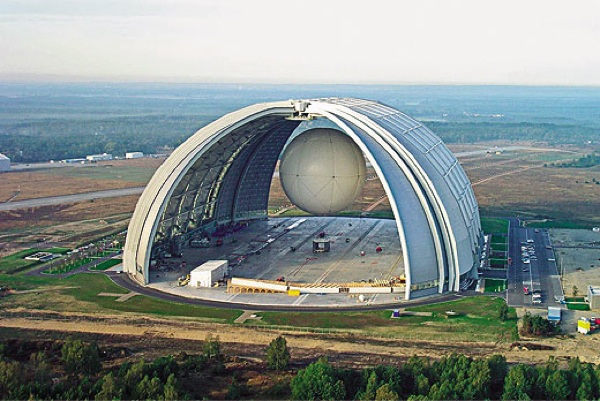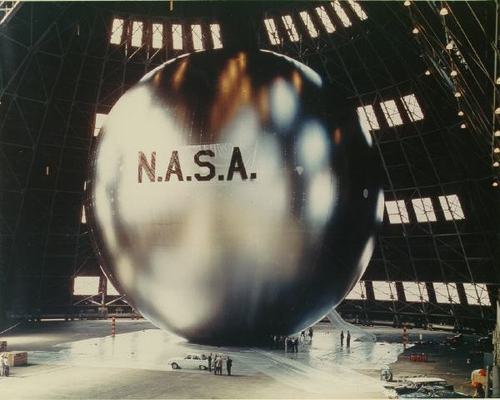
Via David at BoingBoing comes slow word that the world’s largest airship hangar is now a Malaysian conglomerate-owned water park. So says the Smithsonian’s Air & Space magazine.
The structure was built in 2000 on a repurposed military base south of Berlin in the former East Germany by Carl von Gablenz’ industrial airship startup, CargoLifter AG. It is 360 meters long, 210 meters wide, and 107 meters high, more than large enough to accommodate the firm’s proof-of-concept vehicle, the CL75 Air Crane.
The CL75 was built and tested in 2001. The 60-meter diameter spherical balloon was 60 meters in diameter. Also, it was 60 meters in diameter. That’s almost 200 feet, people. It’s almost as if someone heard about Project Echo’s 100-foot satelloon, and decided to double it [apologies to all the 7th graders in the audience, who know that doubling the diameter of a sphere more than doubles the volume. The point here is the pure optics of the number.]

But why a gratuitous reference to Project Echo, one wonders? Oh, maybe because the CL75’s airship was manufactured by TCOM, the former Westinghouse subsidiary which began in 1960 as an attempt to commercialize British WWII barrage balloons for aerial surveillance. And which, since 1996, has been housed in the disused USN airship hangar in Weeksville, NC. [“The TCOM Manufacturing and Flight Test Facility near Elizabeth City, NC has become the East Coast hub for all airship activity.”]
Which is the same disused USN airship hangar the original Project Echo team used to test inflate their first satelloon. Just check out the vented windows in the giant clamshell doors:

The CL75 was destroyed in a storm in 2002, the same year CargoLifter went bankrupt. But fortunately, the East Coast hub for all airship activity soldiers on.
Skip to content
the making of, by greg allen
